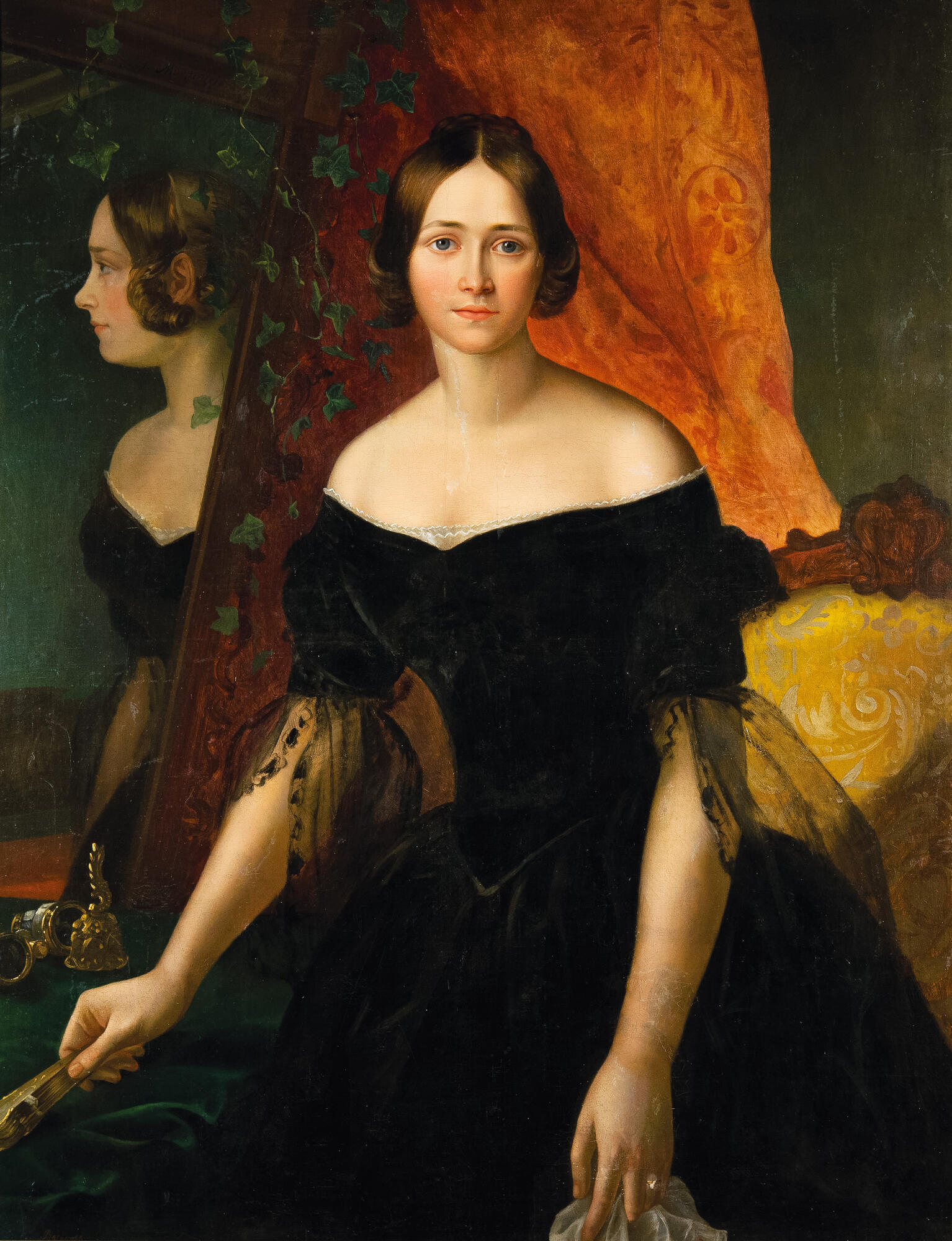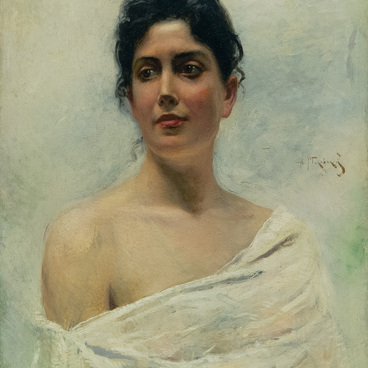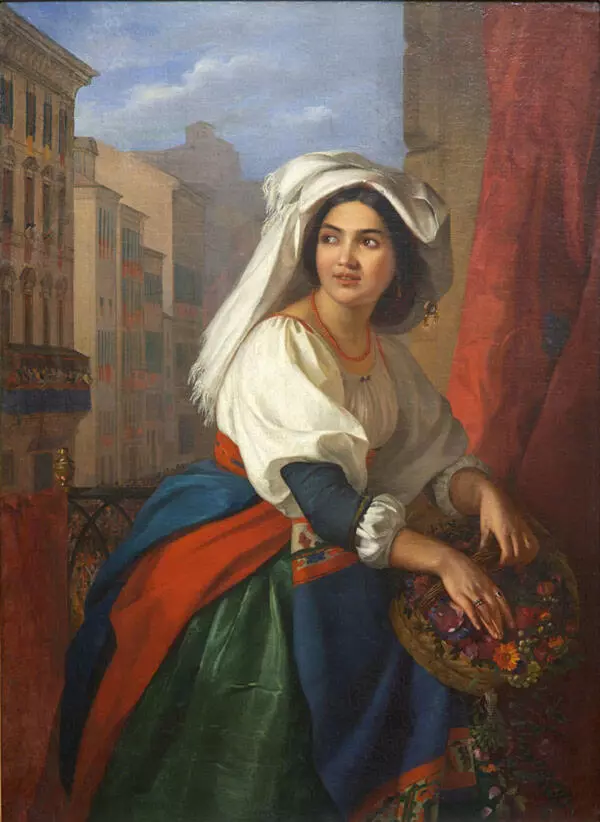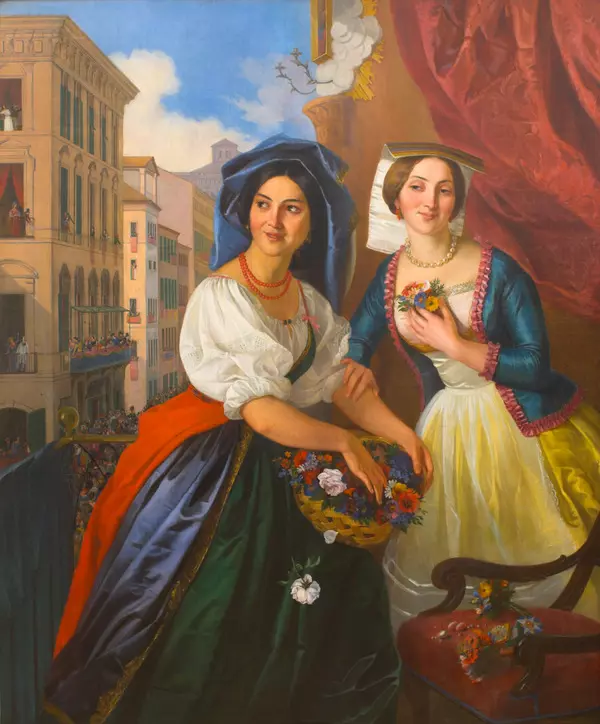Apollon Nikolayevich Mokritsky was a portraitist, he also painted landscapes. He started studying under the artist Alexey Gavrilovich Venetsianov in 1832. Then he was admitted to the Imperial Academy of Arts, where he became a student of Karl Pavlovich Bryullov, and took on his style and manner of painting.
He spent several years in Italy, and when he returned to Russia, in 1849, he received the title of academician for the portrait of Metropolitan Nikanor of Novgorod. He took an active part in buying Taras Shevchenko’s freedom from serfdom.
As a portraitist, Mokritsky enjoyed great popularity, and created a gallery of portraits of his contemporaries: Nikolai Gogol, Aleksey Koltsov, and Nestor Kukolnik.
Apollon Nikolayevich Mokritsky was a typical representative of Academism; his style was distinguished by external showiness and elements of Naturalism. But his work also reflected some features of Realism. The portrait of a woman by Mokritsky, which is housed in the collection of the Kaluga Museum of Fine Arts, is a vivid example of a portrait presenting the sitter to society. This is largely facilitated by the composition with a mirror included in the interior, which reflects the profile of a young woman. The unknown woman is in full face and in profile. Her figure looks expressive in a black velvet dress against the background of a red curtain and yellow upholstery of an armchair. The young woman is depicted in a theater box, in the lower left corner are opera glasses. A small color accent is added to the color palette of the portrait by the leaves of a climbing plant and a dark green tablecloth on the table. Linear and soft refinement of forms, careful pictorial elaboration of all details, and enamel-like texture of the canvas distinguish this portrait as a textbook example of Academic art.
The most curious detail about the portrait is that it features signatures of two artists. On the upper part of the mirror frame is Mokritsky’s autograph, and in the lower left corner is the signature “Vaskov”. According to researchers, another artist could have completed the work of Mokritsky, who in 1841 was preparing for a trip to Italy. This portrait came to the museum in the 1920s from an unknown private collection.
He spent several years in Italy, and when he returned to Russia, in 1849, he received the title of academician for the portrait of Metropolitan Nikanor of Novgorod. He took an active part in buying Taras Shevchenko’s freedom from serfdom.
As a portraitist, Mokritsky enjoyed great popularity, and created a gallery of portraits of his contemporaries: Nikolai Gogol, Aleksey Koltsov, and Nestor Kukolnik.
Apollon Nikolayevich Mokritsky was a typical representative of Academism; his style was distinguished by external showiness and elements of Naturalism. But his work also reflected some features of Realism. The portrait of a woman by Mokritsky, which is housed in the collection of the Kaluga Museum of Fine Arts, is a vivid example of a portrait presenting the sitter to society. This is largely facilitated by the composition with a mirror included in the interior, which reflects the profile of a young woman. The unknown woman is in full face and in profile. Her figure looks expressive in a black velvet dress against the background of a red curtain and yellow upholstery of an armchair. The young woman is depicted in a theater box, in the lower left corner are opera glasses. A small color accent is added to the color palette of the portrait by the leaves of a climbing plant and a dark green tablecloth on the table. Linear and soft refinement of forms, careful pictorial elaboration of all details, and enamel-like texture of the canvas distinguish this portrait as a textbook example of Academic art.
The most curious detail about the portrait is that it features signatures of two artists. On the upper part of the mirror frame is Mokritsky’s autograph, and in the lower left corner is the signature “Vaskov”. According to researchers, another artist could have completed the work of Mokritsky, who in 1841 was preparing for a trip to Italy. This portrait came to the museum in the 1920s from an unknown private collection.





